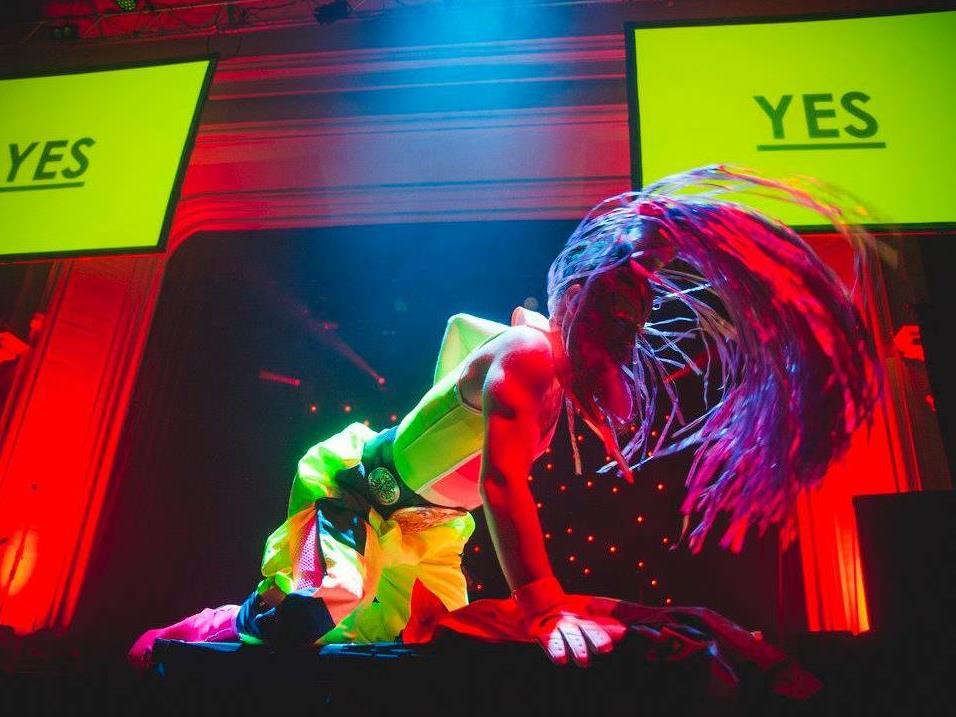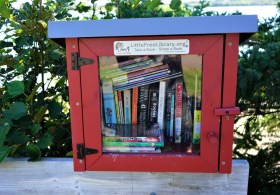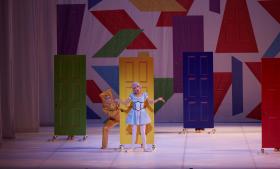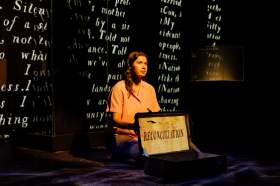Post-Apocaclyptic Body Slam at Melbourne Fringe 2017. Photo credit: Theresa Harrison.
There’s no such thing as an agreed Fringe model. Like the Fringe itself, it’s impossible to define it as one single thing. Fringe Festivals come in so many different shapes, sizes and structures – from the behemoth of Edinburgh, to the mass tent-and-beer-garden models of Adelaide and Perth, to the lottery-based small-scale touring circuit in Canada, and over 220 other worldwide Fringe Festivals, everywhere from Holland to Hong Kong, Korea to the Czech Republic, South Africa to South America. Perhaps the only thing that binds the Fringe models together is the chaos that comes from empowering artists to express themselves, employ themselves, and back themselves – even when no one else will.
The DNA of Melbourne Fringe is different to most other Fringe festivals in the world. We didn’t begin as a response to any other festival. We’re older than our friends the Melbourne Festival and the Melbourne International Comedy Festival. We began as a celebration of the marginalised voices of the independent arts – and that’s still what we are – and so the tightly curated large scale international Festival and the mass appeal of the Comedy Festival grew around us rather than the other way around. We’re collegiate because we don’t compete with each other – we serve different purposes, work mostly with different artists and have largely different audiences. Melbourne Fringe doesn’t strive for perpetual growth but rather for maximum artistic impact, with freedom of artistic expression, artistic discovery and celebrating cultural democracy our reasons for being.
This notion of cultural democracy is unquestionably the most interesting – our Fringe takes place at the intersection between art and citizenship by enabling the right for anyone to contribute to the cultural life of their city as creators and producers of artworks. We transcends conventional, problematic, and deeply politicised viewpoints of talent, content or priority to allow anyone to make and present work. We remove cultural gatekeepers to create equality of opportunity, by allowing anyone to register an event, guaranteeing anyone inclusion. The alternative – a curated model – generally sees an individual empowered to make decisions about whose voice is or isn’t of value – and inevitably these decisions reflect the social and political contexts within which they work, either consciously or unconsciously. Uncurated festivals redefine hierarchy and what is of value, acknowledging that any notion of intrinsic artistic quality is culturally specific, and that powerful artistic decision makers hold curatorial power that can shape and form community tastes and artists’ careers. An open access framework decentralises this power in a radical political position, creating a platform for self-empowerment and therefore for social and artistic change.
I acknowledge it’s an imperfect model for so many reasons. Registration fees mean that many people can’t participate. The media give attention to mainstream acts, which are included because anyone can be. Venue hubs and clubs rationalise finite space and time through programming decisions. Many of these spaces are not culturally safe spaces for some communities. The act of open access is not enough – engagement and active invitation is needed. At Melbourne Fringe we’ve introduced some interventions to acknowledge that not everyone starts on the same playing field. We have a registration micro-grant scheme for people whose marginalised backgrounds mean they can’t afford the fees, we have commissions for Indigenous artists, mentorships for people with disability or who are Deaf, we run registration sessions in English, Auslan and Mandarin, and we make accessible participatory artworks in public space so anyone who wants to can make a cultural contribution. There’s still more to do.
In the Fringe, most works are unfunded, and the individuals make the choice to empower themselves and present their own work, becoming their own employer with agency to tell their own stories. Like any other sector, it’s wrong to assume that all artists want to be employed by someone else – or that they’ll be content to sit at home until a job comes along. It’s also wrong to assume that Fringes are only made up of artists – it’s full of them (emerging, mid-career and, believe it or not, artists at the top of their game) – but it’s also made up of complete amateurs, non-artists who are there to express themselves in a place that provides a platform for the voices of the outsiders; taking the voices from the margins and amplifying them for mainstream attention.
The Fringe is the place that should celebrate alternative viewpoints and those at the margins: the young, the queer, the disabled, the culturally diverse, the bravest artists exploring the boldest ideas. This can only happen by embracing risk and relinquishing curatorial control because by definition we are owned – wholly and joyfully and completely – by our participants.
By crowd sourcing festivals, the Fringe creates opportunity, celebrates diversity and enables genuine discovery through the act of empowering those denied the mainstages. It also creates pathways – even the tiniest sample of Melbourne Fringe’s alumni reads as a veritable who’s who of the arts in Australia: Lou Bennett, Angus Cerini, Maude Davey, Susie Dee, Moira Finucane, Sue Giles, Nicola Gunn, Madeleine Flynn and Tim Humphrey, Robin Fox, Luke George, Bruce Gladwin, Declan Greene, Rachel Griffiths, Lally Katz, Barrie Kosky, Stephanie Lake, Shaun Micallef, Rose Myers, Gideon Obarzanek, Charlie Pickering, Ian Pidd, Stelarc, the Suitcase Royale, Simon Stone, Kate Sulan, Christos Tsiolkas, Yumi Umiumare, Stella Young and yes – even a youthful Simon Abrahams once appeared as a two-headed nun (naturally).
People take part in Fringes for lots of reasons. Believe it or not, some acts make a lot of money at Fringe festivals. Some people don’t. Of course, we all want a financially sustainable sector. But there are measures of success beyond just neoliberal economic concerns, and the Fringe brings real public good through enabling individuals to express themselves, supporting their increase in confidence, career progression and the collective community building that comes from having our own stories validated. The Fringe at its best creates a safe space for the unsafe, placing adventure at the heart of its experience. By definition you’re not guaranteed a great night out at the Fringe. The joy of an uncurated program is that it’s full of terrible work. Or maybe it’s not – that’s the point. What I think is terrible doesn’t really matter when everyone is given access. The Fringe is also full of extraordinary work, by anyone’s measure. Those who benefit from the Fringe are those who push beyond their expectations. Fringe rewards those who go outside their comfort zone and try something new.
Led by a spirit of risk-taking and a love of surprise, the Fringe is a commitment to cultural democracy which uncovers talent, extends artistic practice, empowers individuals and encourages risk-taking. Whether you’re an audience member or a participant, if you’re game, you’ll make discoveries about artists and art forms, about your city and its inhabitants; and ultimately about yourself.
Registrations for the 2018 Melbourne Fringe close on 28 May. Visit www.melbournefringe.com.au for details.





